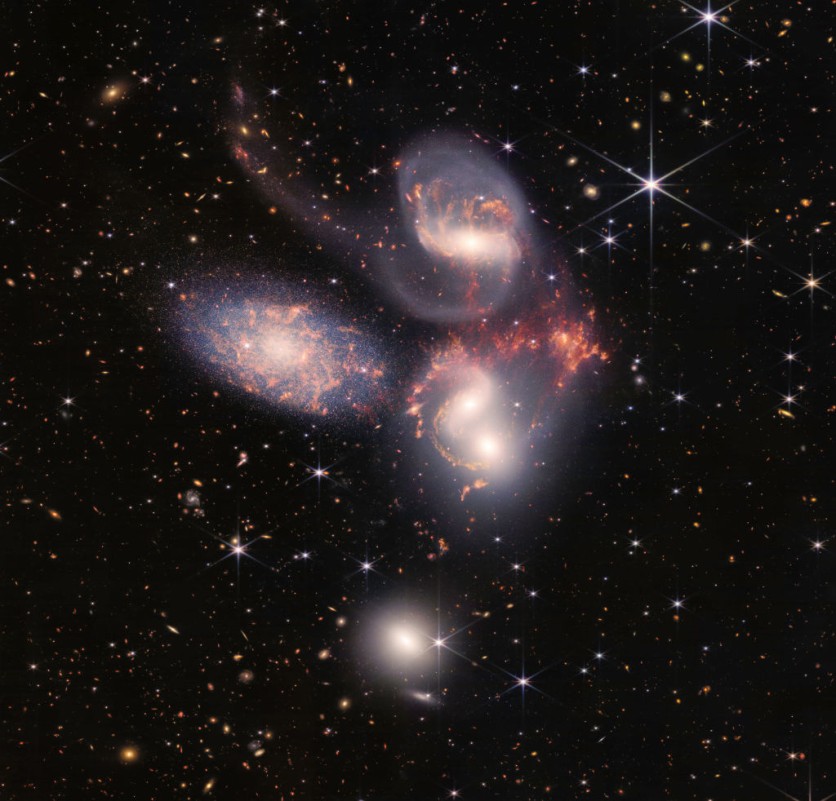In a groundbreaking study, scientists have utilized quasars as cosmic clocks to observe the early universe running in extremely slow motion, providing further validation for Albert Einstein's theory of general relativity.
Through a comprehensive analysis of data from nearly 200 quasars-hyperactive supermassive black holes situated at the centers of early galaxies-the research team has discovered that time appeared to flow five times slower when the universe was just over a billion years old.

Empirical Data Affirms Einstein's Assertions
This remarkable observation serves as a resounding affirmation of Einstein's groundbreaking ideas about the nature of time and space.
The general theory of relativity predicts that the distant and ancient universe should operate at a considerably slower pace compared to the present day.
However, peering back billions of years into the past has posed significant challenges for scientists. Now, by harnessing the power of quasars as cosmic timekeepers, they have successfully unraveled this enigma.
Einstein's theory established the intrinsic connection between time and space, demonstrating that they are intertwined. According to his theory, since the moment of the Big Bang singularity, the universe has been expanding.
This expansion of space implies that our observations of the early universe should exhibit a significant time slowdown compared to the present.
Lead author of the study, Professor Geraint Lewis from the School of Physics and Sydney Institute for Astronomy at the University of Sydney, explains:
"Looking back to a time when the universe was just over a billion years old, we see time appearing to flow five times slower. If you were there, in this infant universe, one second would seem like one second-but from our position, more than 12 billion years into the future, that early time appears to drag."
Novel Discoveries
The research findings, published in Nature Astronomy, are the culmination of Professor Lewis' collaboration with Dr. Brendon Brewer from the University of Auckland.
By analyzing observed data from nearly 200 quasars-remarkable celestial objects with properties akin to hyperactive fireworks-the researchers have successfully examined time dilation in the early universe.
Professor Lewis further explains, "In this paper, we have established that [the time dilation phenomenon extends] back to about a billion years after the Big Bang."
Prior to this study, astronomers had confirmed the slowing of time in the early universe up to roughly half its current age, utilizing supernovae as "standard clocks."
However, supernovae, despite their exceptional brightness, are challenging to observe at the immense distances necessary to study the early universe.
The breakthrough came with the utilization of quasars, allowing scientists to extend the time horizon to just a tenth of the universe's age. This research confirms that as the universe ages, it appears to speed up-an intriguing revelation.
Quasars, compared to supernovae, present a more complex phenomenon akin to a continuous firework display rather than a single flash of light.
Nevertheless, the research team managed to untangle this celestial fireworks display, demonstrating that quasars can also serve as reliable markers of time for the early universe.
Professor Lewis and Dr. Brewer examined the intricate details of 190 quasars observed over two decades. By combining observations across different wavelengths-from green light to red light and into the infrared spectrum-they standardized the "ticking" of each quasar.
Employing Bayesian analysis, they successfully detected the imprint of the universe's expansion in the ticking of each quasar.
"With these exquisite data, we were able to chart the tick of the quasar clocks, revealing the influence of expanding space," explains Professor Lewis.
These results provide further confirmation of Einstein's depiction of an expanding universe, effectively countering earlier studies that failed to identify the time dilation of distant quasars.
Such studies had raised doubts about whether quasars were truly cosmological objects or if the concept of expanding space was even valid.
However, with the new data and analysis, the researchers have successfully uncovered the elusive ticking of quasars, confirming that they behave precisely as predicted by Einstein's theory of relativity.
Once again, Einstein's theories have emerged triumphant, offering profound insights into the workings of the early universe.
This groundbreaking study utilizing quasars as cosmic clocks not only vindicates Einstein's theory of general relativity but also opens up new avenues for unraveling the mysteries of our vast and ever-expanding cosmos.
Related Article : X-ray Light Illuminates the Heart of an Intensely Bright Quasar

ⓒ 2025 TECHTIMES.com All rights reserved. Do not reproduce without permission.




